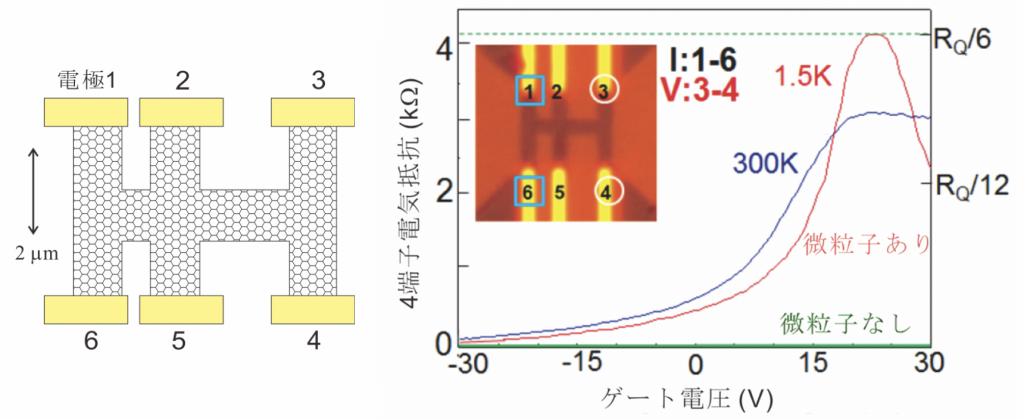Graphene has been successfully converted into a Topological Insulator
The University of Tokyo
Aoyama Gakuin University
Graphene has been successfully converted into a unique state of topological insulator for the first time.
Graphene, a two-dimensional material with single atomic layer composed only of carbon, has attracted attention as a next-generation electronic device material because of its high thermal and electric conductivity. On the other hand, the topological insulators are expected to have a wide range of applications to spintronics. Hence a great expectation is given to the flawless connection of the two kinds of states. In order to generate a topological insulator state, however, strong spin-orbit interaction is indispensable while the spin-orbit interaction in graphene is small due to the lightness of the constituent atoms.
A team of scientist at the Institute for Solid State Physics (ISSP) of the University of Tokyo led by Visiting Associate Professor Junji Haruyama (at the time of research) and Professor Shingo Katsumoto, Professor Ruqian Wu at the University of California, Irvine succeeded in introducing spin-orbit interaction through a quantum tunneling effect, by dispersing small amount of the ultrafine particles composed of heavy atoms of bismuth and tellurium over the graphene.
The group confirmed the topological insulator state appeared in the graphene by controlling the external gate voltage and with measurement of both electric conductivity and state density. The first-principles calculation was also used for verifying that graphene became the topological insulator.
The research article was published in the U.S. science magazine “Science Advances” on November 9, 2018 (EST).

Right: The result of measuring the 4-terminal electric resistance calculated by measuring a voltage between the electrodes 3 and 4 under constant current flowing between the electrodes 1 and 2 against the gate voltage. The red and blue lines indicate results measured at room temperature (300 K, blue line) and low temperature (1.5 K, red line) respectively in a sample in which fine particles are dispersed. As shown in the diagram, a topological insulator state is generated near the gate voltage of 17.5 V. The inserted figure shows the electrode number in the scanning probe micrograph of the sample.
Reference:
- Journal: Science Advances
- Title: Evidence for a quantum-spin-Hall phase in graphene decorated with Bi2Te3 nanoparticles
- Authors: K. Hatsuda, H. Mine, T. Nakamura, J. Li, R. Wu, S. Katsumoto, *J. Haruyama
- DOI: 10.1126/sciadv.aau6915
